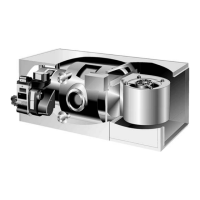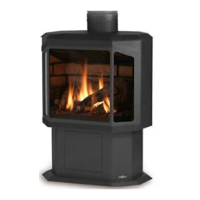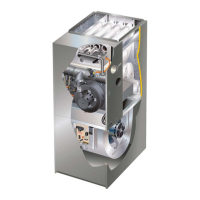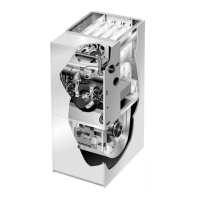Page 17
B−Venting Considerations
WARNING
Combustion air openings in front of the furnace
must be kept free of obstructions. Any obstruction
will cause improper burner operation and may re
sult in a fire hazard or injury.
WARNING
The barometric shall be in the same atmospheric
pressure zone as the combustion air inlet to the
furnace. Deviation from this practice will cause im
proper burner operation and may result in a fire
hazard or injury.
CAUTION
Do not store combustible materials near the fur
nace or supply air ducts. The material (such as
paint, motor oil, gasoline, paint thinner, etc.) may
ignite by spontaneous combustion creating a fire
hazard.
WARNING
This furnace is certified for use with type L" vent.
B" vent must not be used with oil furnaces.
NOTE−Oil burning equipment may be vented into an ap
proved masonry chimney or type L vent. (Type L vent is
similar in construction to type B gas vent except it carries a
higher temperature rating and is constructed with an inner
liner of stainless steel rather than aluminum).
Prior to installation of unit, make a thorough inspection of the
chimney to determine whether repairs are necessary. Make
sure the chimney is properly constructed and sized accord
ing to the requirements of the National Fire Protection Asso
ciation. The smallest dimensions of the chimney should be
at least equal to the diameter of the furnace vent connector.
Make sure the chimney will produce a steady draft sufficient
to remove all the products of combustion from the furnace.
A draft of at least .04" w.c. (9.9 Pa) is required during burner
operation.
1− Local building codes may have more stringent instal
lation requirements and should be consulted before
installation of unit.
2− The vent connector should be as short as possible to
do the job.
3− The vent connector should not be smaller than the
outlet diameter of the vent outlet of the furnace.
4− Pipe should be at least 24 gauge galvanized.
5− Single wall vent pipe should not run outside or through
any unconditioned space.
6− Chimney should extend 3 feet (0.9 m) above the high
est point where the vent passes through the roof, and 2
feet (0.6 m) higher than any portion of a building within
a horizontal distance of 10 feet (3 m).
7− The vent must not pass through a floor or ceiling. Clear
ances to single wall vent pipe should be no less than 6"
(152 mm); more if local codes require it.
8− The vent may pass through a wall where provisions have
been made for a thimble as specified in the Standards of
the National Board of Fire Underwriters. See figure 17.
9− The vent pipe should slope upward toward the chim
ney on horizontal run at least 1/4 inch (6 mm) to the
foot (0.3 m) and should be supported by something
other than the furnace, such as isolation hangers. See
figure 18.
10− Extend the vent pipe into the chimney so that it is flush
with the inside of the vent liner. Seal the joint between
the pipe and the liner.
11− The furnace shall be connected to a factory built
chimney or vent complying with a recognized stan
dard, or masonry or concrete chimney lined with a
lining material acceptable to the authority having
jurisdiction.
WALL THIMBLE
FIGURE 17
THIMBLE
VENT PIPE
COMBUSTIBLE
WALL
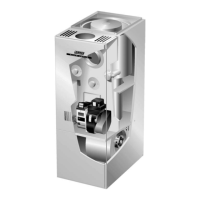
